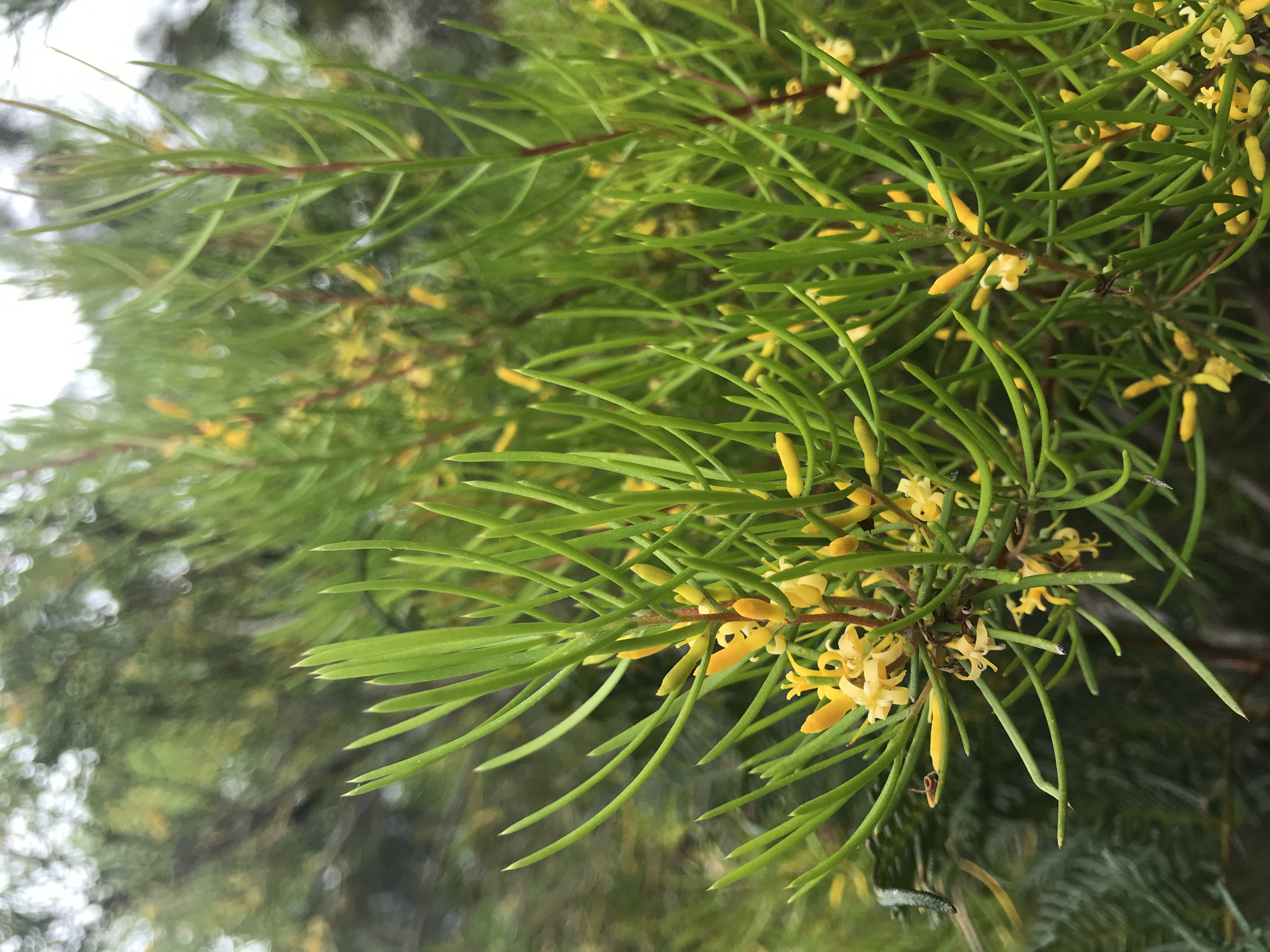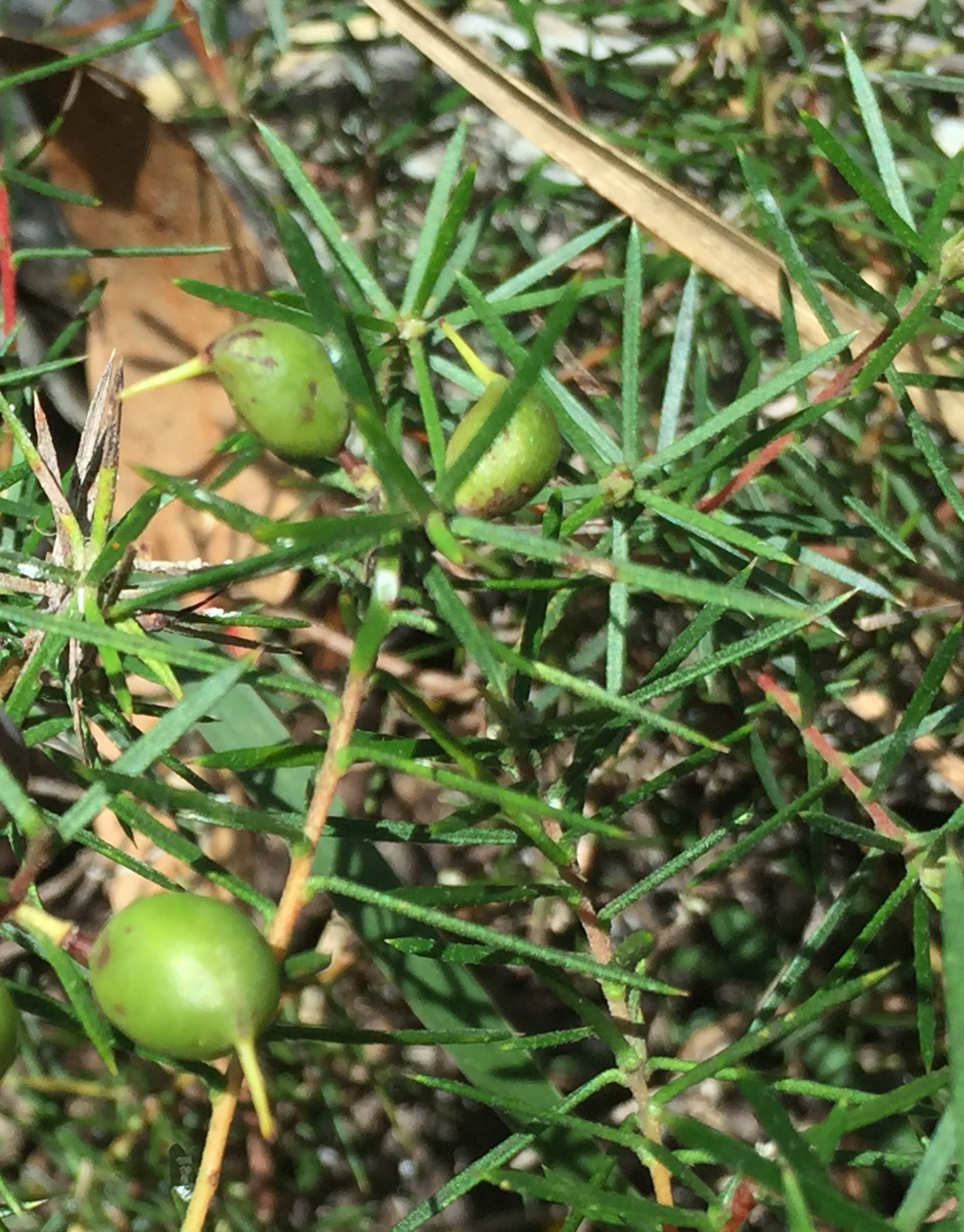Scientific Name: Persoonia juniperina
Common Name: prickly geebung
Family Classification (Clade): Eudicots
Family: Proteaceae
Form Description: Erect to decumbent shrub. Young branches sparsely to densely hairy.
Height (m): 0.5 – 2
Flowers: Yellow, tubular with recurved petals.
Fruit: Drupe – purplish-black, ovoid, 6-10 mm long, edible but tasteless.
Municipality
Plant Communities
Habitat Notes
Widespread in Tasmania growing on siliceous soils from sea level to 700m.
Site Tolerance
Dry, Moist
Soil Tolerance
Nutrient-poor, Sandy, Well-drained
General Notes
Adaptable to a variety of conditions. Bird attracting. Good protection for bird nesting.
Propagation Calendar
-
Flowering Month
Jan Feb Mar Apr May Jun Jul Aug Sep Oct Nov Dec -
Seed Collecting Month
Jan Feb Mar Apr May Jun Jul Aug Sep Oct Nov Dec -
Sowing Month
Jan Feb Mar Apr May Jun Jul Aug Sep Oct Nov Dec -
Cutting Month
Jan Feb Mar Apr May Jun Jul Aug Sep Oct Nov Dec
Propagation Method
Seed Information
Seed Collection
Seed extraction by fermentation in water for 1-2 weeks or treat with a weak solution of sulphuric acid. Wash and dry seed for storage.
Seed Treatment Method
Leaching Some species require extended time in nature weathering prior to germination as chemical inhibitors are broken down in the seed coat. Replicate this process by flushing away the inhibitor with frequent washing e.g. place the seeds in a stocking in a toilet cistern and drape it over the top for easy handling.
Seed Treatment Notes
Germination appears to be prevented by a combination of thick woody fruit, chemical inhibitors and embryo immaturity. Leach in running water for 21 days or scarify the fruit, sow in autumn, leave unwatered in summer months, allow to bake in sun. Alternative recommendations include using 2-3 year old seed collected from under plants, splitting seed with knife, treatment with gibberallic acid or duplicating bushfire conditions.
Cutting & Division Information
Propagation has been successful from cuttings of very young growth, which can be very slow to form roots.

